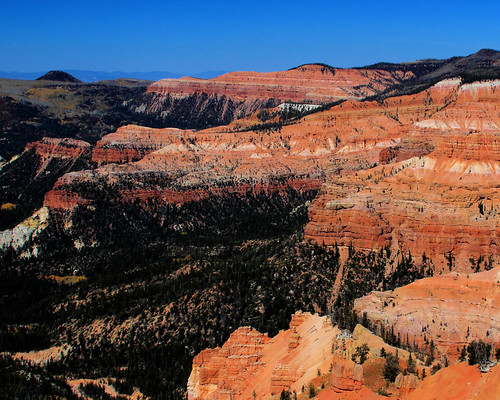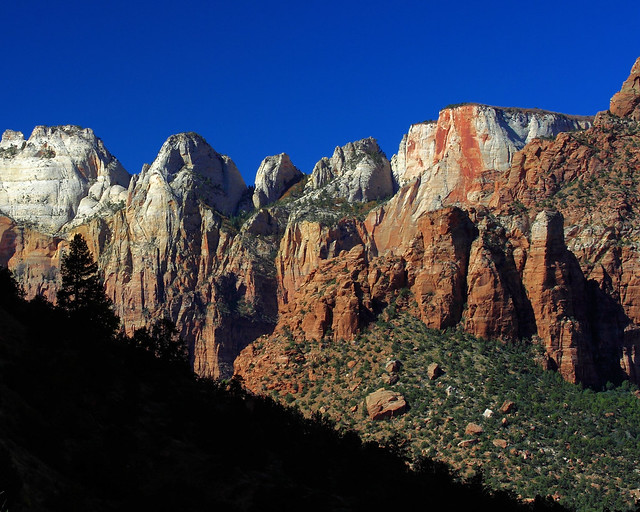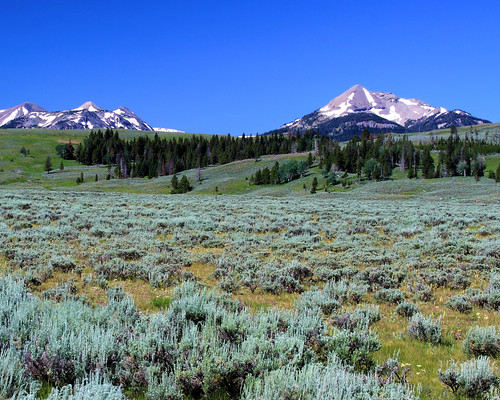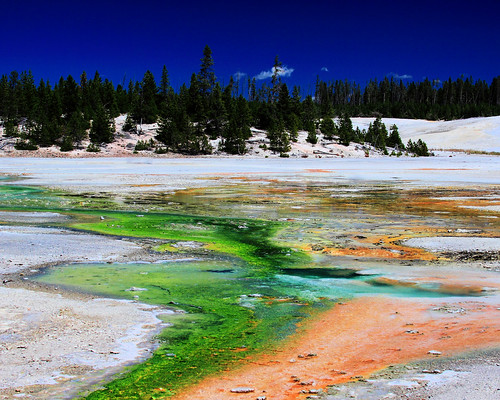Once again no new photos, so I played around with some old ones.
WELCOME
Glad to have you visit Mountain Meadows Photographs. I hope you enjoy my view of nature. I am not one for a lot of words, so it is mostly photographs.
Unless noted all of the photographs are my original work.
Your Comments Are Welcome
ENJOY
Sunday, November 27, 2011
Wednesday, November 2, 2011
Cedar Breaks National Monument
On the way home from Zion NP we took a quick side trip to Cedar Breaks National Monument. The trails were snowy or muddy, but it was a nice day.
Wednesday, October 26, 2011
Thursday, August 4, 2011
Yellowstone National Park - Landscapes
Here are a few pictures taken of Yellowstone on a recent trip there. I did not take any notes on the locations. Since I don't have names for most of the shots I left all names out.
Tuesday, August 2, 2011
Yellowstone National Park - Geothermal
Just got back from a short trip to Yellowstone. Here are some photographs of the hot water.
The first ones are from the Mammoth Hot Springs area at the North Entrance. As a kid this was one of my favorite areas in the park, other than the bears. It was colorful and not as stinky. Since the earthquake disrupted the plumbing it has lost much of the color.
Echinus Geyser is the largest acid-water geyser known. Its waters are almost as acidic as vinegar with a pH ranging from 3.3 to 3.6 . Acid geysers are extremely rare with the majority of the planet's total being found here at Norris Geyser Basin.
Enerald Spring a hot spring's color often indicates the presence of minerals. In a clear blue pool, the water is absorbing all colors of sunlight except one, blue, which is reflected back to our eyes. Here in Emerald Spring's pool, another factor joins with light refraction to give this spring its color. The 27-foot (8 meter) deep pool is lined with yellow sulfur deposits. The yellow color from the sulfur combines with the reflected blue light, making the hot spring appear a magnificent emerald green.
Porcelain Basin the overflow channels of geysers and hot springs are often brightly colored with minerals and microscopic life forms. Hardy, microscopic, lime-green Cyanidium algae thrives in these warm acid waters. Orange cyanobacteria may be found in the runoff streams in Porcelain Basin. From a distance these bacteria look like rusty, iron-rich mineral deposits.
Steamboat Geyser the world's tallest active geyser, Steamboat can erupt to more than 300 feet (90m), showering viewers with its mineral-rich waters.
The first ones are from the Mammoth Hot Springs area at the North Entrance. As a kid this was one of my favorite areas in the park, other than the bears. It was colorful and not as stinky. Since the earthquake disrupted the plumbing it has lost much of the color.
The next pools, geysers and hot srpings are from the Norris Geyser Basin. I overheard a tour guide tell her group that this basin shows you everthing the Park has to offer (in hot water) and is usually their first stop.
Enerald Spring a hot spring's color often indicates the presence of minerals. In a clear blue pool, the water is absorbing all colors of sunlight except one, blue, which is reflected back to our eyes. Here in Emerald Spring's pool, another factor joins with light refraction to give this spring its color. The 27-foot (8 meter) deep pool is lined with yellow sulfur deposits. The yellow color from the sulfur combines with the reflected blue light, making the hot spring appear a magnificent emerald green.
Porcelain Basin the overflow channels of geysers and hot springs are often brightly colored with minerals and microscopic life forms. Hardy, microscopic, lime-green Cyanidium algae thrives in these warm acid waters. Orange cyanobacteria may be found in the runoff streams in Porcelain Basin. From a distance these bacteria look like rusty, iron-rich mineral deposits.
Steamboat Geyser the world's tallest active geyser, Steamboat can erupt to more than 300 feet (90m), showering viewers with its mineral-rich waters.
The next photo is Old Faithful. Not really my favorite area of the park, but you have to have a photograph of it, right? The one after that is a pool on the Firehole Geyser Basin Loop.
Friday, July 29, 2011
Christmas Meadows
Here are some pictures of the Uintas taken on a recent trip to Christmas Meadows. Still a lot of snow and the streams were running high blocking most of the hiking trails we tried. Like every trip taken this year we were rained on. I wonder if Texas would pay to have us visit them?
Christmas Meadows at sunset
Colorado Columbine
Elephant Head
(Pedicularis groenlandica)
One of the most interesting plants found in northern Utah. The flower stems grow about one foot high and bear one quarter inch flowers which look exactly like little magneta-pink elephants heads. They flower in July and August and are found damp alpine areas.Tuesday, June 21, 2011
Grand Teton National Park - Day Four
On our last day the skies were still mostly cloudy, but we saw a lot more of the sun. We spent some time looking for and not finding bears. We did find a variety of wildflowers and enjoyed the mountains. I have tried to identify the flowers as best as I can. The source of the identification is from "Mountain Plants of Northeastern Utah" by Berniece Andersen and Arthur Holmgren. Since the book is over thirty years old the scientific names may have changed.
Sunday, June 19, 2011
Grand Teton National Park - Day Three
On day three it was raining hard at Grand Teton National Park, so we traveled up to Yellowstone and visited the Old Faithful area. On the way back to Jackson the skies began to clear over the Tetons. We finally saw some bears in the Tetons. A lone black bear feeding on an elk carcass and a black bear with her cub. Even with the bad weather it was a fun day.
Tuesday, June 14, 2011
Grand Teton National Park - Day Two
Day two at the park started out pretty good, but by about 3:00 pm the rain came. We went back to Jackson Hole and did the shops. Later, we went back to the Park. No bears were seen. Not much for pictures a few landscapes and some flowers.
Subscribe to:
Comments (Atom)





















































